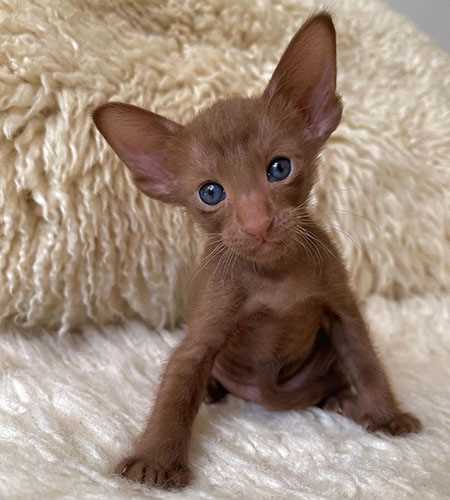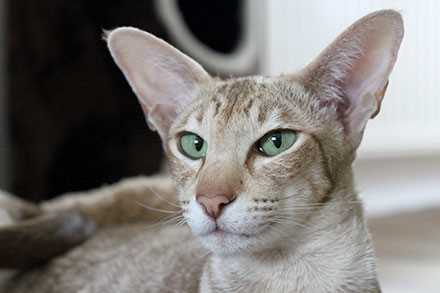

If you’re considering welcoming one of these sleek beauties into your home, be prepared to allocate between $800 and $1,500 for your new friend. This range can vary significantly based on factors such as breeder reputation, lineage, and geographic location.
In addition to the initial purchase price, anticipate ongoing expenses for food, grooming, and veterinary care, which can add up to around $500 to $1,000 annually. High-quality nutrition and regular health check-ups are essential for maintaining their well-being.
Adoption fees from shelters can be considerably lower, usually ranging from $100 to $300. This option not only saves you money but also provides a loving home to a pet in need. Keep in mind that some shelters might have specific requirements or restrictions based on the cat’s background.
Price Range for Exotic Felines
Expect to pay between $800 and $2,500 for these unique companions. Factors influencing the cost include breeder reputation, lineage, and location. A well-established breeder typically charges more due to their experience and quality of the kittens.
Additional Expenses
Beyond the initial purchase price, consider ongoing expenses such as food, litter, and regular veterinary care. High-quality nutrition is crucial, so budget around $40 to $60 monthly for premium cat food. Routine check-ups and vaccinations can add another $100 to $300 annually.
Investing in Care
Consider pet insurance as an investment for unexpected health issues. Monthly premiums vary, averaging between $20 and $50. Choosing to adopt from shelters might lower initial costs, but be prepared for potential medical needs that could arise later.
Initial Purchase Price of Oriental Shorthair Cats

Expect to pay between $800 and $2,500 for a young feline from a reputable breeder. The price varies based on lineage, location, and breeder reputation.
High-quality bloodlines with show potential often command higher prices, while pet-quality kittens are typically less expensive. Here are some key factors influencing the cost:
- Breeder’s reputation: Established breeders with health-tested parents usually charge more.
- Location: Prices can differ significantly based on regional demand and availability.
- Color and pattern: Rare colors or specific patterns may increase the price.
- Age: Kittens are generally more expensive than older cats, especially if they are still in high demand.
Additionally, it’s wise to consider the initial expenses beyond purchase. These include vaccinations, spaying/neutering, and basic supplies.
For those who enjoy outdoor living, investing in a best pressure washer for garden slabs can help maintain a clean environment for your new furry friend.
Always ensure you are prepared for the ongoing costs of care, including food, veterinary visits, and grooming, which can add up over time.
Factors Influencing the Cost of Oriental Shorthair Felines
Breeding quality significantly impacts the price of these delightful companions. Kittens from reputable breeders, known for their expertise and adherence to breed standards, often command higher prices due to their lineage and health guarantees.
Geographical location plays a role as well. Prices may vary between regions, with urban areas typically having higher costs due to demand and living expenses for breeders.
Health and Genetic Testing
Ensuring the health of a pet involves genetic testing and vaccinations. Breeders who prioritize health checks often pass those costs onto potential owners, resulting in a higher initial price.
Color and Pattern Variations
Different colors and patterns can affect the market value. Rare hues or unique markings may attract collectors, thus increasing the price for specific individuals.
| Factor | Impact on Price |
|---|---|
| Breeding Quality | Higher for reputable breeders |
| Location | Urban areas typically more expensive |
| Health Testing | Increases cost due to testing expenses |
| Color and Pattern | Rare variations may elevate price |
Finally, demand and popularity can fluctuate, influencing market trends. Keeping an eye on these elements can provide insight into the expected investment for future owners.
Veterinary Expenses for Oriental Shorthair Cats
Regular veterinary visits are necessary, with annual check-ups costing between $100 and $200. This includes vaccinations and general health assessments. For a new companion, initial vaccinations may run around $50 to $100, depending on the clinic.
Preventative Care Costs
Spaying or neutering is a key expense, generally falling between $100 and $300. It’s crucial for avoiding health issues and behavioral problems. Additionally, flea and tick treatments can range from $15 to $50 monthly, while dental care might cost $200 to $500 annually, depending on the required procedures.
Emergency and Specialty Care
If health issues arise, emergency visits can escalate quickly, often exceeding $500. Conditions like diabetes or kidney disease could lead to ongoing treatment expenses of $50 to $300 monthly. It’s wise to consider pet insurance, which typically costs $20 to $50 each month, to help mitigate these potential expenses.
Grooming and Maintenance Costs for Oriental Shorthair Cats
Regular grooming is key to keeping my sleek coat in top condition. I recommend budgeting around $30 to $50 per month for professional grooming services. This includes brushing, nail trimming, and occasional baths, essential for maintaining healthy skin and fur.
At home, investing in quality grooming tools pays off. A good brush costs about $10 to $20, and a pair of nail clippers is around $5 to $15. These are crucial for avoiding matting and ensuring comfort.
Diet and Nutrition Expenses
Quality food is vital. Expect to spend approximately $40 to $70 monthly on premium cat food that supports my health needs. Choosing high-protein options helps keep my energy levels up and coat shiny.
Miscellaneous Maintenance Costs
Don’t overlook litter and supplies. Monthly litter expenses can range from $15 to $30. Additionally, toys and scratching posts should be factored in, with an average annual cost of $100. Regular replacement keeps boredom at bay and promotes healthy behavior.
All these aspects ensure I stay happy and healthy, which is priceless for my human companions!
Food and Nutrition Expenses for Oriental Shorthair Cats
Feeding a feline companion involves careful planning and budgeting. A nutritious diet is crucial for maintaining health and vitality. Here’s a breakdown of potential costs associated with feeding my fellow furry friends.
- High-Quality Dry Food: Expect to spend around $30 to $60 monthly on premium kibble. Look for brands with real meat as the first ingredient.
- Canned Wet Food: Canned options range from $1 to $3 per can. Feeding two cans daily can add up to $60 to $180 each month.
- Treats: Budget around $10 to $20 monthly for healthy snacks. Choose treats with minimal additives.
- Special Dietary Needs: If any specific health issues arise, prescription diets may cost $50 to $100 each month, depending on the requirements.
Overall, plan for a monthly food budget of $100 to $300, depending on dietary choices and the health of your companion. Investing in quality nutrition pays off in long-term health benefits.
Insurance Options and Their Impact on Overall Costs
Choosing a suitable insurance plan can significantly alter the financial landscape for feline guardians. Policies typically range from basic accident coverage to comprehensive health plans that cover routine check-ups and emergency care. A solid plan can save you thousands over a lifetime, especially when unexpected health issues arise.
Monthly premiums vary widely based on the coverage level and the provider. Generally, you might expect to pay between $10 to $50 monthly. It’s wise to compare options and read reviews to ensure the policy meets your needs without excessive exclusions.
Benefits of Coverage

Having insurance can lead to higher quality veterinary care. Many facilities accept insurance, allowing you to focus on your pet’s health without the stress of hefty bills. Policies often cover vaccinations, dental work, and even specialized treatments, which can assure peace of mind.
Long-term Financial Planning
Investing in insurance early can mitigate future costs. As a feline ages, medical needs typically increase, making coverage more critical. Some plans offer wellness packages that cover routine care, which can prevent larger issues down the line. Evaluating your cat’s lifestyle and potential health risks can guide you in selecting the most suitable policy.
Rescue Organizations vs. Breeders: Cost Comparison
Choosing between a rescue organization and a breeder is a significant decision that affects your wallet and the life of a feline. Adopting from a rescue typically incurs lower upfront costs, often ranging from $50 to $200. This fee usually covers initial vaccinations, spaying or neutering, and sometimes even a health check. Additionally, many rescues include a starter kit with essentials for your new friend.
In contrast, purchasing from a breeder can set you back anywhere from $1,000 to $2,500, depending on the reputation of the breeder and the lineage of the little one. Breeders often provide detailed health records and may offer warranties on genetic health, but these perks come at a premium price.
Both options come with ongoing expenses such as health care, grooming, and food. Adopting from a shelter means your new companion might already be accustomed to home life, possibly reducing initial adaptation costs. On the other hand, kittens from breeders may require more training and adjustment time, leading to additional expenditures.
Choosing a reputable rescue can save money and help a cat in need of a loving home. However, if you prefer specific traits and lineage, a breeder may be the route for you. Just ensure you consider long-term costs, including food and other essentials like the best cat carrier for big cats. Every penny counts when it comes to providing the best life for your furry friend.









